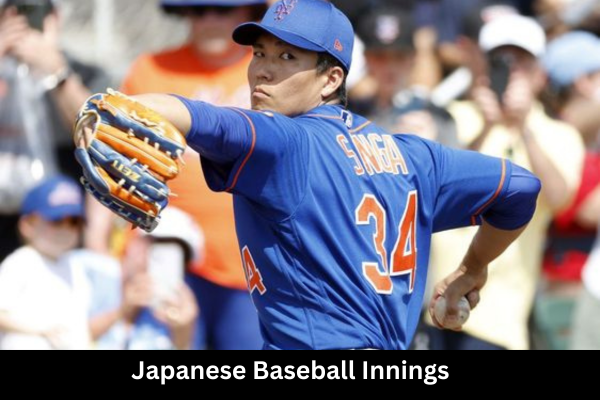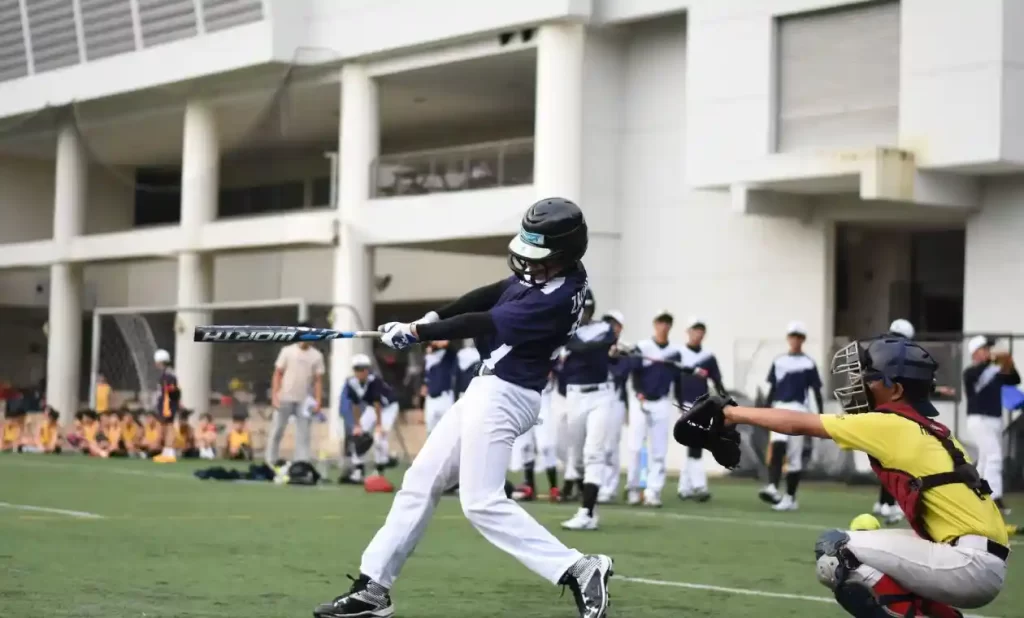 Image Credit-Pinterest
Image Credit-Pinterest
Japanese professional baseball, a sport celebrated for its rich traditions, brings a distinctive flavor to the concept of innings. In this overview, we delve into the fascinating intricacies of how innings unfold in the Land of the Rising Sun, setting the stage for a unique baseball experience.
Japan’s approach to innings goes beyond the standard, injecting an element of unpredictability into every game. Unlike conventional setups, the innings rules here carry a distinct charm, offering fans a thrilling ride through the world of Japanese professional baseball. Let’s unravel the nuances that make these innings truly one-of-a-kind.
Also Read: Scrimmages in Baseball
Regular Season Innings
In the heart of the Japanese baseball season, the standard inning structure aligns closely with the familiar 9-inning format found in Major League Baseball (MLB). Most matchups in the Nippon Professional Baseball (NPB) league adhere to this tradition, providing a sense of continuity for fans.
The excitement, however, takes an interesting turn when games reach a deadlock after the regulation 9 innings. Here, unlike MLB, Japanese baseball introduces the possibility of extra innings, extending the contest until a decisive victor emerges. This unique feature adds a layer of suspense, ensuring that no game concludes without a clear winner.
Diverging paths emerge between the Central League and the Pacific League in case the score remains tied after 12 innings. In the Central League, a tied game after 12 innings is declared just that—a tie. Meanwhile, in the Pacific League, the contest can push into additional innings beyond the 12th, with no official limit in place. This league-specific twist adds an extra dimension to the dynamics of Japanese baseball, creating scenarios that keep fans on the edge of their seats.
Playoffs: Climax Series
As the regular-season dust settles, the intensity escalates during the Climax Series, the pinnacle of Japanese professional baseball playoffs. In this heightened stage, the innings script takes a nuanced turn.
The Climax Series introduces a limitation to the innings drama, capping it at 12 innings. This means that even in the quest for postseason glory, teams are given a finite window to secure victory. The stakes are high, and the pressure is palpable.
However, the suspense doesn’t end there. If the scoreboard remains deadlocked after the designated 12 innings, a unique outcome awaits: the game is declared a tie. This distinctive feature emphasizes the commitment to fairness and acknowledges the limits of prolonged play in the pursuit of determining a winner.
This playoff-specific innings rule adds an extra layer of excitement to the Climax Series, keeping fans gripped as teams battle not only for supremacy but also against the ticking clock of innings constraints.
Also Read: Baseball in Japan
Japan Series
The pinnacle of Japanese professional baseball unfolds in the highly anticipated Japan Series, where the champions from the Central and Pacific Leagues clash in a showdown of epic proportions. In this championship series, the innings saga takes center stage with a predetermined 15-inning limit.
As the tension builds inning by inning, teams must navigate the constraints of this extended limit. The 15-inning rule introduces an added layer of strategy, emphasizing the importance of efficient gameplay to secure victory within the specified timeframe.
Yet, even in this grand finale, the possibility of a tied score after 15 innings looms large. In such a scenario, the game, rather than stretching into endless overtime, is declared a tie. This acknowledgment of a game’s finite nature, even in the grandeur of the Japan Series, showcases the commitment to fairness and ensures that a conclusive winner emerges within the defined boundaries.
The Japan Series, with its 15-inning spectacle, encapsulates the essence of Japanese baseball, blending skill, strategy, and the thrill of limited-time showdowns on the grandest stage.
Also Read: What’s a Dinger in Baseball?
In Crux
In summarizing the intricacies of Japanese professional baseball innings, we unveil a tapestry of rules that set the sport apart. The 9-inning regular season games, with the potential for extra innings, showcase a commitment to determining a clear victor. The league-specific nuances, especially the contrasting approaches in the Central and Pacific Leagues, add a layer of unpredictability that captivates fans throughout the season.
Transitioning to the playoffs, the Climax Series introduces a time-bound intensity with a 12-inning limit. This limitation, coupled with the prospect of a tie, creates a unique postseason dynamic, emphasizing both competition and sportsmanship.
The grand finale, the Japan Series, amplifies the spectacle with a 15-inning limit, where champions clash within defined boundaries. Even in this culminating event, the acknowledgment of ties after the limit ensures a fair conclusion to the game.
As we wrap up this exploration of Japanese baseball innings, the distinctive nature of the sport becomes evident. From the regular season’s extra-inning drama to the playoffs’ time-bound intensity and the grandeur of the Japan Series, every inning tells a story.
Japanese baseball’s commitment to fairness, suspense, and strategic gameplay shines through, creating an unparalleled experience for fans worldwide. The innings, while governed by rules, also embody the spirit of unpredictability, making each game a journey into the heart of this beloved sport.
How much did you like this? Decoding Japanese Baseball Innings: A Guide, please share your view in the comment box. Also, share this blog with your friends on social media so they can also enjoy it. For more blogs, visit baseballpropicks.com
Related Article:

Meet Daniel Anderson, the heart and soul behind Baseball Pro Picks. At 49, Daniel’s life has revolved around baseball, a passion that’s as strong today as it was when he first fell in love with the game. Living in the USA, Daniel has dedicated countless hours to watching, analyzing, and understanding every pitch, hit, and home run, making almost no game missed. His deep-rooted love for the sport is matched only by his commitment to sharing insightful, expert analysis with fellow baseball enthusiasts. With decades of experience and a keen eye for the game’s nuances, Daniel brings a unique perspective that enriches Baseball Pro Picks. Trust Daniel to guide you through the intricacies of baseball with the authority and trustworthiness of a true aficionado.












